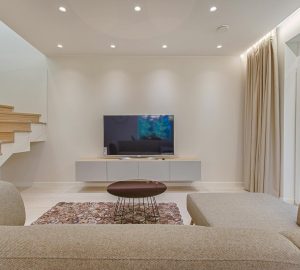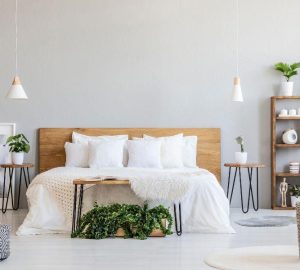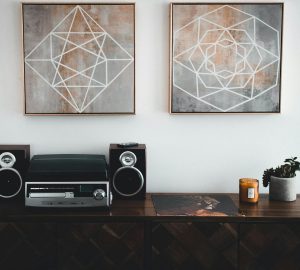Designer Lighting plays a crucial role in shaping the atmosphere, functionality, and aesthetics of your home.
It’s not just about brightness; it’s about creating spaces that feel comfortable, look beautiful, and serve their intended purpose. Whether you’re renovating, redecorating, or just looking to make a few updates, understanding how to use lighting effectively can transform your living space.
This blog post will explore different types of lighting, how to layer them within your home, and tips for using lighting to enhance every room.
Understanding the Basics of Home Lighting
Before diving into specific rooms and designer lighting strategies, it’s important to understand the three main types of lighting that can be layered to create a balanced and inviting environment.
- Ambient Lighting: Often referred to as general lighting, ambient lighting provides overall illumination to a room. This is the foundational layer that ensures a space is well-lit and functional. Common sources of ambient lighting include ceiling-mounted fixtures, chandeliers, and recessed lighting.
- Task Lighting: Task lighting is focused on specific areas where activities like reading, cooking, or working take place. It’s brighter than ambient lighting and helps reduce eye strain by providing direct illumination where it’s needed. Examples of task lighting include desk lamps, under-cabinet kitchen lights, and vanity lights in bathrooms.
- Accent Lighting: Accent lighting is used to highlight specific features or objects in a room, such as artwork, architectural details, or plants. It adds depth and dimension to a space, making it more visually interesting. Spotlights, track lighting, and wall sconces are commonly used for accent lighting.
Layering Light for Maximum Impact
To create a well-lit home, it’s important to layer these three types of lighting. This approach not only ensures that a room is functional but also enhances its mood and aesthetics. Here’s how you can effectively layer lighting in different areas of your home:
1. Living Room Lighting:
- Ambient Lighting: Start with a ceiling fixture, such as a chandelier or pendant light, to provide overall illumination. Recessed lighting can also work well, especially in larger spaces.
- Task Lighting: Use floor lamps or table lamps next to seating areas for reading or other activities. Adjustable lamps are particularly useful for directing light where it’s needed.
- Accent Lighting: Highlight artwork, shelves, or architectural features with wall sconces or track lighting. Consider using dimmable lights to create a cosy atmosphere in the evenings.
2 Kitchen Lighting:
- Ambient Lighting: Recessed lights or a central ceiling fixture can provide the necessary general lighting. Pendant lights over an island or dining area also add to the ambient light while serving as a design feature.
- Task Lighting: Under-cabinet lighting is essential for illuminating countertops where food preparation takes place. Consider adding a focused light above the sink and stove for added visibility.
- Accent Lighting: Add interest by highlighting a backsplash, open shelving, or decorative elements with LED strip lights or small spotlights.
3 Bedroom Lighting:
- Ambient Lighting: A central ceiling fixture, such as a pendant light or flush mount, can provide general illumination. Ensure it’s not too harsh by opting for a fixture with a dimmer switch.
- Task Lighting: Place bedside lamps or wall-mounted reading lights near the bed for nighttime reading or relaxation. A small lamp on a dresser can also serve as task lighting when getting ready.
- Accent Lighting: Use soft, indirect lighting to create a calming environment. Consider adding a strip light behind the headboard or under the bed frame for a subtle glow.
4 Bathroom Lighting:
- Ambient Lighting: Recessed lighting works well in bathrooms, providing even illumination throughout the space. A central ceiling light or a fixture above the mirror can also serve as ambient lighting.
- Task Lighting: Proper lighting around the vanity mirror is crucial for grooming tasks. Wall sconces on either side of the mirror or a lighted mirror can reduce shadows and provide clear visibility.
- Accent Lighting: Highlight features like a decorative tile wall or a freestanding bathtub with accent lights. Consider using dimmable lights to create a spa-like atmosphere for relaxation.
5 Home Office Lighting
- Ambient Lighting: Overhead lighting is essential for general illumination, but it should be complemented by other light sources to avoid glare and create a balanced work environment.
- Task Lighting: A good desk lamp is crucial for focused work. Adjustable lamps that can be directed at the task at hand help reduce eye strain and improve productivity.
- Accent Lighting: Add warmth and personality to your workspace with accent lighting on shelves or around art pieces. This can make the office feel more inviting and less clinical.
Tips for Enhancing Your Home with Lighting
- Use Dimmers: Dimmers are a simple yet effective way to control the intensity of light and create the desired ambience. They allow you to adjust the light level based on the time of day, the activity, or your mood.
- Consider Color Temperature: The colour temperature of your lighting can drastically change the feel of a room. Warm lighting is inviting and cosy, making it ideal for living rooms and bedrooms. Cool lighting is more energising and better suited for task-oriented spaces like kitchens and home offices.
- Embrace Natural Light: Maximise the use of natural light by keeping windows clear of heavy curtains and strategically placing mirrors to reflect light into the room. Natural light not only enhances the appearance of a space but also has health benefits, such as improving mood and energy levels.
- Balance Light and Shadow: Too much uniform light can make a room feel flat and uninteresting. Use a combination of light sources to create a balance of light and shadow, adding depth and dimension to the space.
Final Words
Lighting is a powerful tool that can transform the look and feel of your home. By understanding the different types of lighting and how to layer them effectively, you can create spaces that are not only functional but also warm, inviting, and aesthetically pleasing. Whether you’re redesigning a single room or your entire home, thoughtful lighting design should be a key component of your plan.
Take the time to experiment with different lighting options, and don’t be afraid to mix and match styles to reflect your personal taste. With the right lighting, your home can truly shine.









